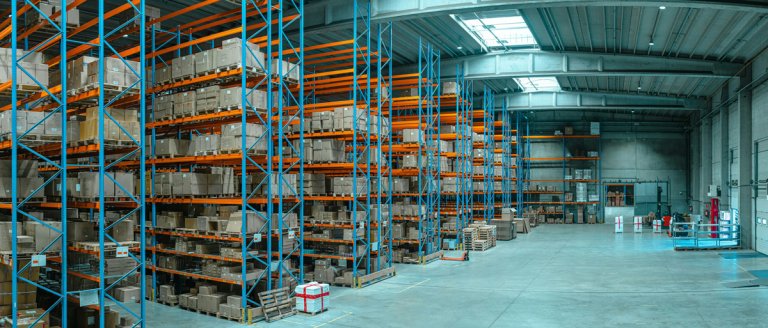
Strategies for Enhancing Supply Chain Resilience in High-Mix Low-Volume Manufacturing
Introduction
You know you face unique challenges if you’re in the world of high-mix, low-volume (HMLV) manufacturing. Unlike high-volume manufacturers with predictable demand, you must navigate a complex demand volatility and variability landscape. But in this environment, there’s also opportunity. You can thrive in your industry by developing strategies that enhance supply chain resilience and adaptability. Together, we can explore these strategies and help your business succeed.
Challenges of HMLV Manufacturing:
HMLV manufacturers face a significant challenge in dealing with unpredictable demand. As customer demands keep changing, product forecasts need to be adjusted regularly. It is essential to have a more sophisticated supply chain strategy to tackle this issue that can adapt quickly to these changes. HMLV companies usually have diverse suppliers, each providing unique components with varying lead times. This adds to the complexity of managing operations.
The Opportunities for Improvement:
Improving and optimising the flow throughout the value chain is the key to success for HMLV manufacturers. This includes making the physical flow of materials, part routings and processes more visible, well-defined, and better understood. To achieve this, processes must be predictable and capable, with effective forecasting, scheduling and planning processes.
Moreover, it is essential to ensure that performance is visible at all levels of operations and reviewed regularly by leaders who are accountable for performance. Transparent measures related to inventory turns, accuracy, forecast accuracy, material availability, supply chain costs, and shipping performance are essential to identify value opportunities that emerge from the performance of the supply chain.


Strategies for Enhancing Resilience:
To improve the supply chain’s resilience in HMLV manufacturing, it is vital to establish efficient processes such as Sales and Operations Planning (S&OP), forecasting, capacity planning, material planning, and scheduling. These processes provide a foundation for recognising and taking advantage of opportunities to enhance performance.
Businesses need to adopt a multi-faceted approach that addresses the specific challenges of this industry. The following strategies can help HMLV manufacturers enhance their supply chain resilience and adaptability:
1. Diversify Supplier Base: Given the unpredictable nature of demand, HMLV manufacturers should consider diversifying their supplier base. Having multiple suppliers for critical components can mitigate risks associated with supply chain disruptions.
2. Agile Forecasting and Planning: Implement agile forecasting and planning processes that allow rapid adjustments to production schedules and inventory levels based on real-time demand changes. Utilise advanced analytics to improve forecasting accuracy.
3. Inventory Optimisation: Striking the right balance between maintaining sufficient inventory and avoiding excess is crucial. Implement lean inventory management practices to reduce carrying costs while ensuring product availability during demand spikes.
4. Collaborative Relationships: Foster collaborative relationships with suppliers, sharing information and working closely to align production and delivery schedules. This collaborative approach enhances flexibility and responsiveness.
5. Technology Integration: Leverage technology solutions, including supply chain management software and devices, to gain real-time visibility into your supply chain. This allows you to identify and address issues proactively.
6. Continuous Improvement: Embrace a culture of continuous improvement throughout the supply chain. Encourage feedback from employees and partners to identify areas for optimisation.
7. Risk Mitigation: Develop a comprehensive risk mitigation strategy with contingency plans for potential disruptions, such as natural disasters, geopolitical issues, or supplier failures.
Effective HMLV manufacturing goes beyond product quality and manufacturing performance. It involves competitive pricing, perceived value, and quick response times. Realising these goals requires a holistic strategy that enhances supply chain management and operations. Such a plan should prioritise the resilience of the supply chain.
To achieve this, performance must be visible at all levels of operations, and leaders responsible for performance must regularly review it. The performance of the supply chain should reveal value opportunities, making it crucial to have transparent measures related to inventory turns, accuracy, forecast accuracy, material availability, supply chain costs, and shipping performance.
HMLV manufacturers who implement these strategies can improve their supply chain resilience. This enables them to adapt quickly to changing market conditions and guarantee consistent product availability. Maintaining product quality and responding to unpredictable demand is an edge in HMLV manufacturing, making supply chain resilience a significant factor in achieving success.
In conclusion, supply chain resilience is not an added benefit for HMLV manufacturers but a necessity. By developing a strategic plan, investing in technology, and fostering collaborative relationships, businesses can thrive in the dynamic and complex world of HMLV manufacturing while effectively meeting customer demands. This approach lays the foundation for long-term success in the industry.